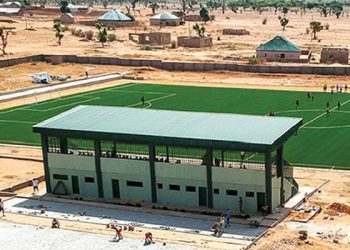As far as energy supply in Nigeria is concerned, the dark days are, sadly, far from over. Not only is this inexcusable, government should take urgent steps to halt the trend and make the country’s energy potential a reality. The Ministry of Power recently confirmed that total amount of power generated stood at 1,939MW on June 19 as against 3,277 MW wheeled to the DISCOS four days earlier or the peak 4,517MW generated by the unbundled Power Holding Company of Nigeria (PHCN) in December 2012. The sharp drop in power generation was attributed to the shutdown of the Utorogu and Ughelli East gas plants as a result of vandalism of power infrastructure.
But while the shutdown of the gas plants was the more plausible cause, why were both gas plants shut for maintenance at the same time? Pertinently, the public was hitherto made to believe that electricity generated by the defunct PHCN suffered wide fluctuations because of hiccups in the volume of gas supplies owing to failure to promptly settle gas bills that had fallen due. There have been two important occurrences since PHCN recorded the noted peak output, namely, a new minister has taken charge of Power Ministry and the PHCN utilities have been privatized with a view in the latter case to stem inefficiency in the power sector. However, the period has witnessed noticeable drop in electricity from the recorded peak. The now seemingly permanent drop was as high as 1,240MW on the date the gas plants were shut. Why have the noted two key changes failed to bring about the much yearned-for improvement in the power generated and distributed? Are the privatized utilities also not paying for gas consumed as and when due?
Government should take urgent steps to realise the country’s energy potential. According to the Nigeria Vision 2020 Economic Transformation Agenda, “the overall target for the power sector is to grow installed power generation capacity from 6,000MW in 2009 to 20,000MW by 2015 and 35,000MW by 2020”. Needless to state, the 2009 target has yet to be achieved in 2014. In any case, it is not enough to increase installed capacity; it is also necessary for that capacity to be utilised to the maximum and the power generated to be fully wheeled to power-starved consumers. Fortunately, the stated targets and objectives are easily achievable. By harnessing its petroleum resources, the country can become self-sufficient in energy and even develop spare capacity. Abundant power supply at very cheap prices would serve as added attraction to investors at home and from abroad.
Nigeria’s proven oil and gas deposits will last 40 years and 120 years respectively at the current rate of extraction and it is estimated that subsequent exploration would at least double the known volumes of recoverable deposits. Perhaps as a blessing in disguise, from the long delay in passing the Petroleum Industry Bill has sprung the sobering realisation that the high hopes and prospects of viable reliance on gas exports have been deflated. Nigeria’s export gas plants include the premier Nigeria Liquefied Natural Gas Limited, owned 49 per cent by NNPC. It currently operates six gas liquefaction trains and pays about US$10 billion annually as dividends to its four-member owner consortium. Secondly, construction of the Brass River Liquefied Natural Gas plant, which will initially operate two trains, may be said to be ongoing, notwithstanding recent reports of planned review of the final investment decision. Thirdly, although construction has yet to begin on the Olokola LNG plant, some equity participants have signaled their intention to withdraw. The Federal Government has the means and should take up any renounced equity in addition to its initial equity of 49.5 per cent. Fourthly, the Escravos Gas-to-Liquid plant and, fifthly, the Oso Natural Gas plant complete the gas projects that are commissioned or certain to be constructed without hitches. On the other hand, a cloud of uncertainty envelopes future export gas projects. Fresh discoveries of large natural gas fields that are nearer the major LNG consuming countries than Nigeria as well as shale gas production will adversely affect external demand for Nigeria’s gas.
The delay in passing the PIB has been cited as a major reason for the failure by NNPC joint venture international oil companies to decide and embark on providing necessary infrastructure for the supply of gas to power plants and other domestic markets. Other excuses by the IOCs like low domestic price of gas and uncertainty about payment for gas supplies were addressed several years ago under the gas-to-power price schedule and World Bank financial guarantees. Yet the oil majors have continued to hold back. And that disposition is unlikely to change even if the PIB becomes law. Any discerning layman can foresee that at that stage the IOCs will in all probability point to the excuse that returns accruable from the present relatively low aggregate demand for gas do not justify the high cost of infrastructure required for gas gathering, processing and transmission.
The gas needs for energy, petrochemicals and other industries cannot be met by the stopgap Domestic Gas Supply Obligation and individual gas pipelines built by firms for own use. The Gas Master Plan unrealistically leaves private sector operators, particularly foreign investors, to develop and supply Nigeria’s gas needs. The views of the NNPC participants at the World Petroleum Congress in Moscow last month boil down to the same expectations of the gas master plan. There was actually an open admission that Nigeria lacked the relatively puny sum of $6 billion that should be invested in order to grow activities in the oil and gas sector. But that was erroneous because the country currently has about $24 billion lying idle and which should be invested in priority national projects. As a result, the Goodluck Jonathan administration should urgently begin to build a National Gas Grid that is wholly Federal Government-owned or is executed in partnership with minority but credible private sector players in the petroleum sector. The grid can be put in place within four years. Comprising the long envisioned three central gas processing facilities and inter-connected network of pipelines for gas gathering and transmission, the grid should have capacity to handle gas volumes far in excess of the present limited domestic and regional demand complete with redundancy and multiple access to the various markets from any gas source. Such gas infrastructure will stimulate further domestic demand for expanding electricity requirements and various industrial purposes as well as facilitate domestic gas competition.
Therefore, with or without a Petroleum Industry Act, the appropriate federal administration should get the National Assembly to appropriate part of the external reserves for the financing of this topmost priority national project. After deducting funds in the excess crude account and making stand-by provision for three months’ import cover, the balance of the external reserves currently amounting to over $24 billion is available for use by the Federal Government for critical infrastructural and economic projects notwithstanding the fact that the funds represent withheld Federation Account dollar accruals that had been substituted with destabilizing apex bank deficit financing.














































